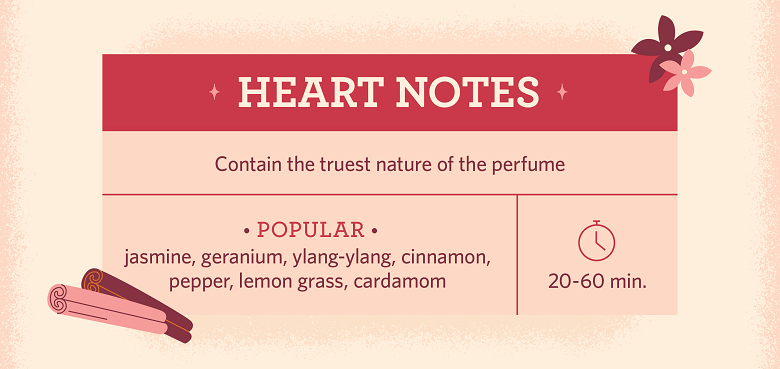NOTES
WHAT ARE PERFUME NOTES?
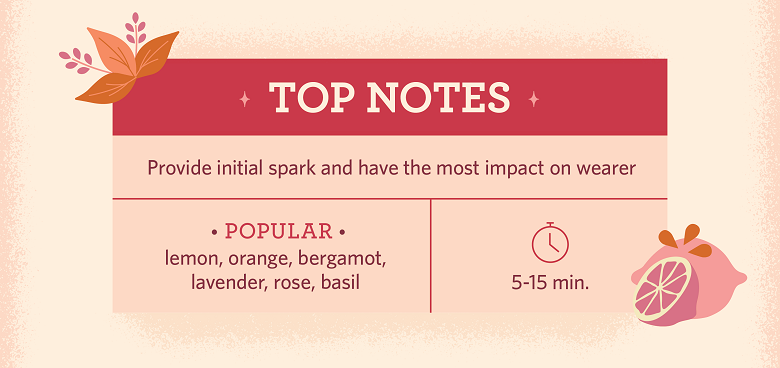
Top notes, sometimes referred to as headnotes, form the top layer of a fragrance. In other words, top notes are the scents you detect first after spraying a perfume. These play a role in setting first impressions and shaping a fragrance’s story.
TOP NOTES
Top notes usually evaporate quickly, lingering around for only the first five to fifteen minutes. Their main purpose is to give off an initial scent and then transition smoothly into the next part of the fragrance. As a result, top notes generally consist of lighter and smaller molecules. Some common top notes include citrus scents – like lemon, orange, and bergamot – as well as light floral scents like lavender and rose. Basil and anise are also commonly used as top notes. Fresh notes are light and citrusy in nature, making them popular as top notes. Notes like orange and bergamot give a fragrance its freshness and sweetness, while lemon and bergamot have a more bitter sharpness. Floral notes add a natural feel to a fragrance. They are often used as top or heart notes and can be mixed with other notes for a more dramatic scent. Jasmine is another popular floral note with its fruity and white floral scent, while ylang ylang adds a more tropical touch.
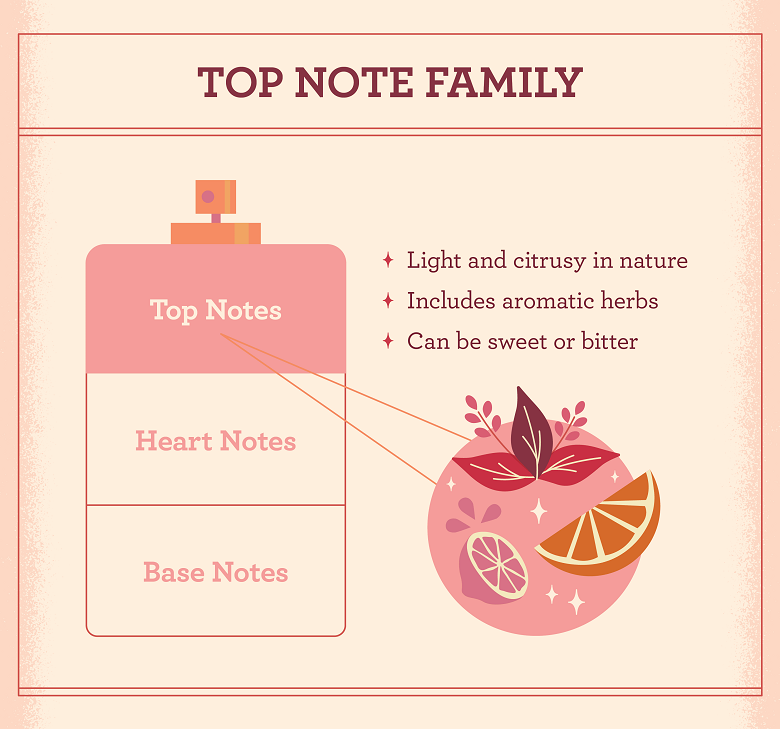
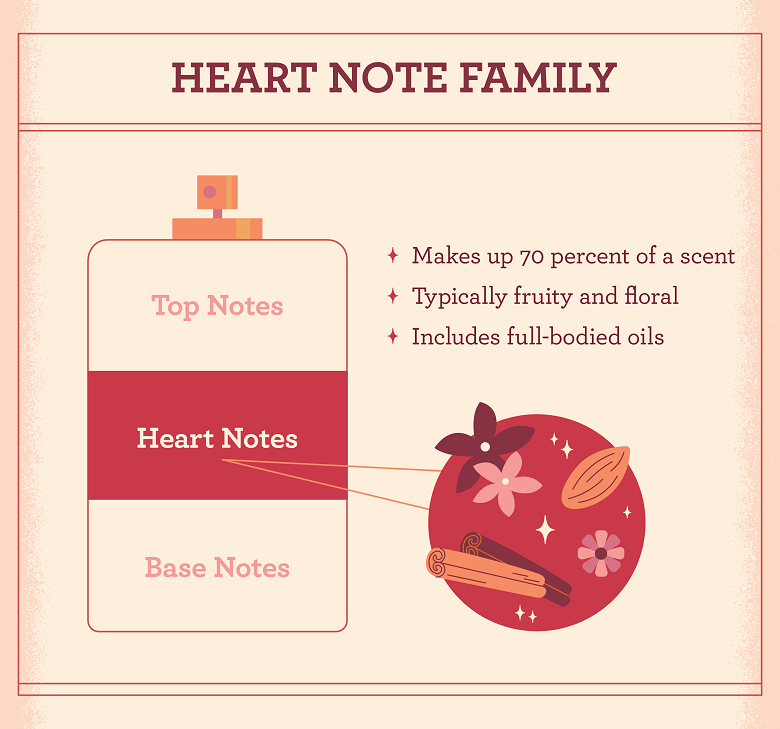
HEART NOTES
Sometimes referred to as middle notes, the heart notes also serve as a buffer for the base notes, which may not smell as pleasant on their own. Because they make up around 70 percent of the total scent, heart notes usually last longer than top notes. Heart notes appear as the top notes start to fade and remain evident for the full life of the fragrance. Heart notes include full-bodied, aromatic floral oils like jasmine, geranium, neroli and ylang-ylang, as well as cinnamon, pepper, pine, lemongrass, black pepper and cardamom. Fruity notes are most commonly used as middle notes, as they blend easily with other notes and can add more depth to a fragrance. For example, blackberry adds a rich, musky scent, while notes like apple and strawberry give off a sweet and juicy vibe. Spice notes are used to add warmth and potency to a fragrance, mixing particularly well with floral notes in the heart of a perfume. Notes like cinnamon and nutmeg add spice and sweetness, while others like rosemary and basil possess an herbal quality.
BASE NOTES
Since they form the perfume’s foundation, base notes are very rich, heavy and long-lasting fragrance notes. They kick in after about 30 minutes and work together with the middle notes to create the fragrance’s scent. Since base notes sink into your skin, their scent lingers the longest and can last for six hours or more. Popular base notes include vanilla, amber, musk, patchouli, moss and woody notes like sandalwood and cedarwood. Sandalwood and patchouli are two wood notes that are often used in a fragrance’s base to strengthen the scent’s lifetime. While most wood notes have an earthy quality, some like cedarwood and oud provide a nice sweet scent. Musky notes are most frequently found in the base notes of fragrances. Their richness helps to fill in the foundation and increase the duration of the scent. The different types of musk, from black musk to cashmere musk, means that these scents can add a unique trait to any fragrance.
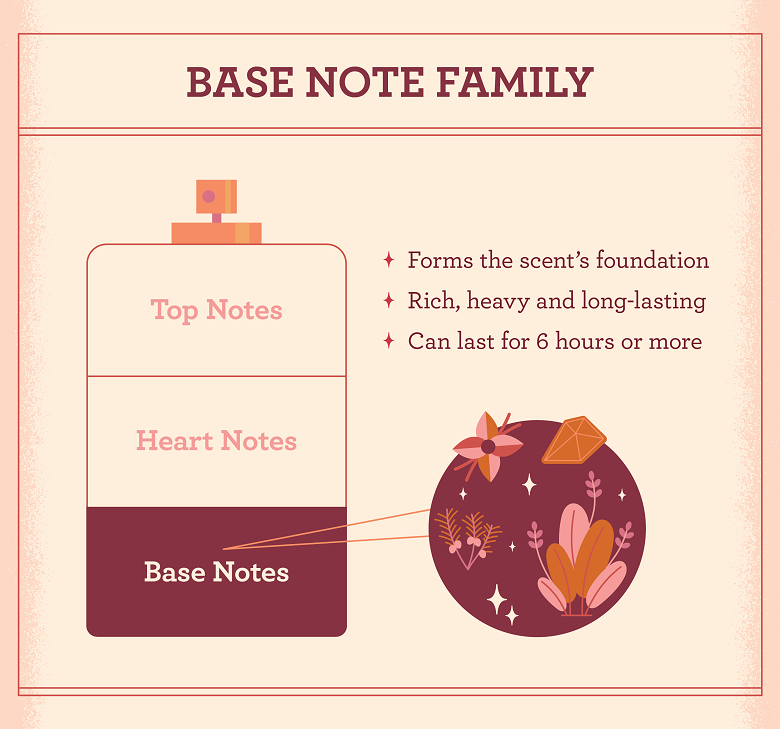
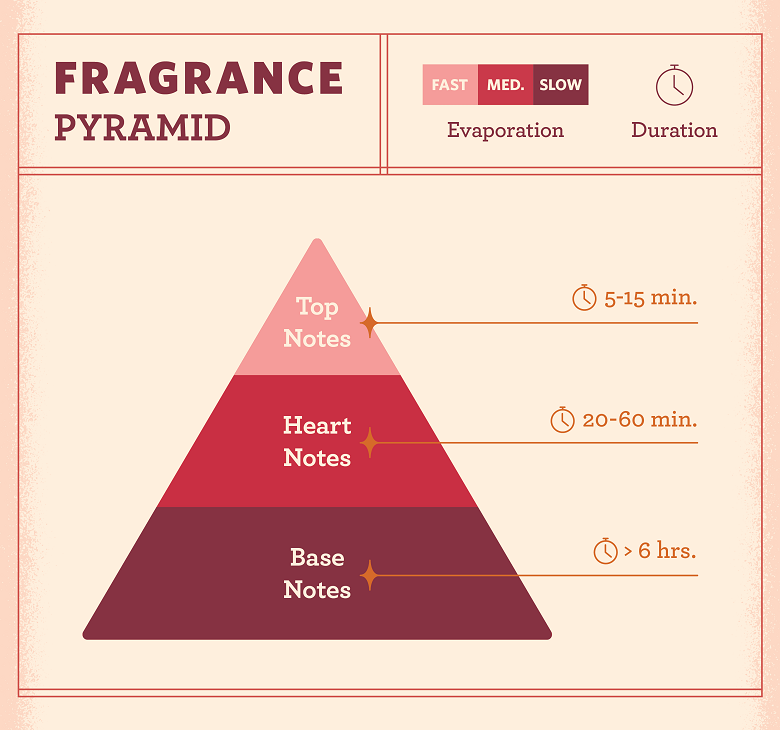
SUMMARY
In summary perfume notes are ingredients that make up a fragrance. They are categorized as top notes (citrus, lavendar) heart notes (cinnamon, jasmine) and base notes (vanilla, musk). This carefully selected blend of ingredients forms the perfume accord, the basic character of a fragrance. Perfume makers carefully select notes to make sure a fragrance both smells pleasant and evokes a certain experience. Notes are classified in a fragrance pyramid.
